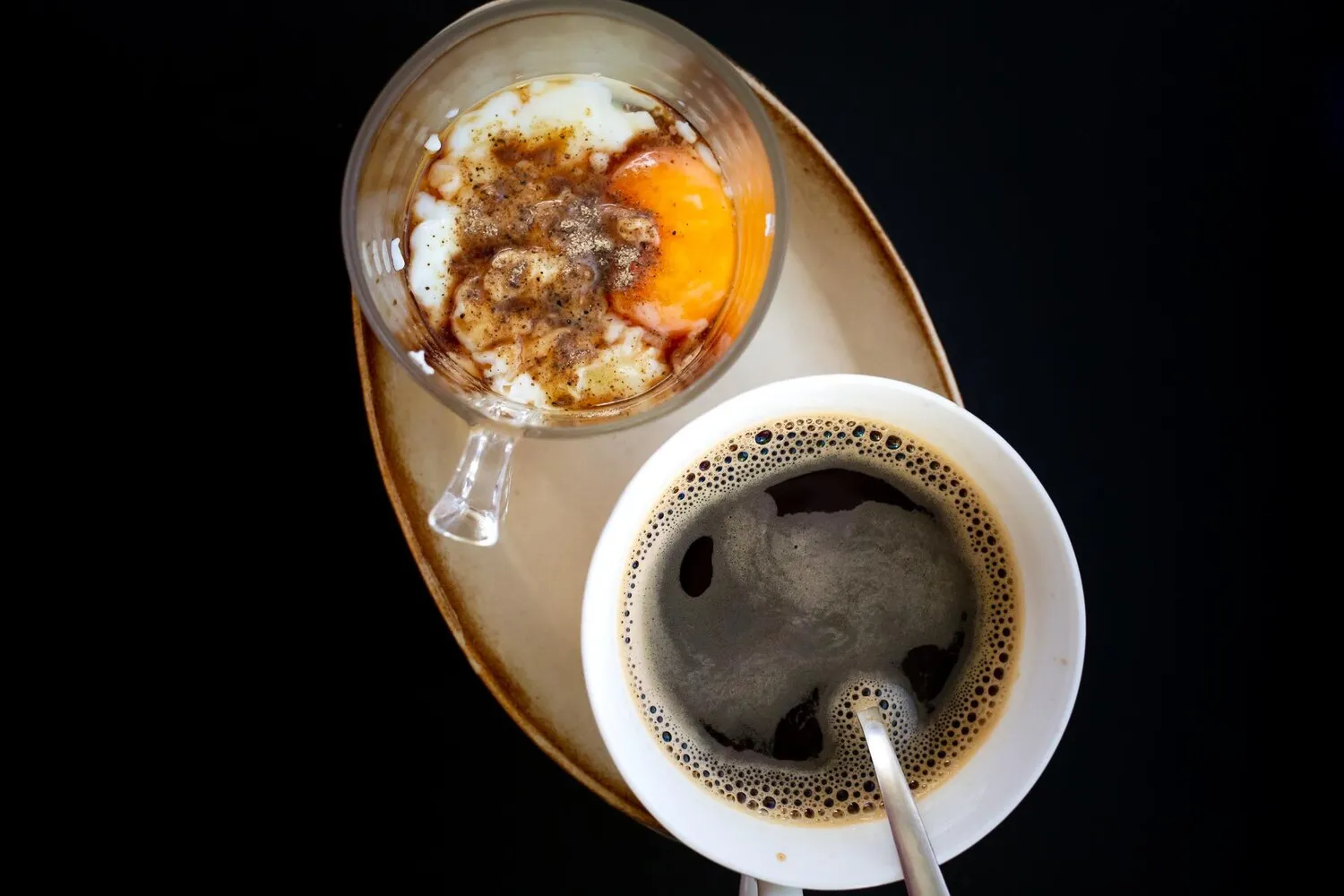
Pour Over Coffee
Single origin coffee brewed using the pour over method.
Nutrition Facts
* The % Daily Value (DV) tells you how much a nutrient in a serving of food contributes to a daily diet. 2,000 calories a day is used for general nutrition advice.
The pour over method is a refinement of earlier coffee brewing techniques, gaining popularity in the early 20th century with the development of simple filter devices. Single-origin coffee appreciation is a more recent trend, emphasizing the unique terroir and processing methods of specific coffee farms or regions.
Pour over coffee is often associated with a slower, more mindful coffee ritual. It emphasizes the appreciation of quality and craftsmanship, moving away from mass-produced, standardized coffee experiences.
The Third Wave Coffee Movement
Pour over coffee is a staple of the 'Third Wave' coffee movement, which focuses on coffee as an artisanal foodstuff, much like wine or cheese. It emphasizes direct trade, sustainable farming practices, and meticulous roasting profiles to highlight the bean's origin characteristics.
Coffee Cupping and Sensory Evaluation
The pour over method is frequently used during coffee cupping, a standardized process used by coffee professionals to evaluate the flavors, aromas, and overall quality of different coffee beans. It allows for a precise and unbiased assessment of the coffee's characteristics.
Home Brewing Ritual
Pour over brewing provides a hands-on experience that allows individuals to connect with the coffee-making process. It is seen as a mindful activity, perfect for those who appreciate the subtle nuances of coffee.
Pour over coffee, especially when using single-origin beans, highlights nuanced and distinct flavor profiles based on the coffee's origin. Expect clarity, brightness, and a pronounced expression of the bean's characteristics.
The flavors are largely dependent on the coffee bean's origin. African coffees often exhibit fruity and floral notes like berries, citrus, and jasmine. Central and South American coffees can offer chocolatey, nutty, and caramel flavors. Indonesian coffees often showcase earthy, spice-toned profiles. Acidity is typically higher in pour over compared to other brewing methods, and bitterness is minimized with proper technique.
Water Temperature
Use water heated to around 200-205°F (93-96°C). Too hot, and the coffee will taste bitter; too cool, and it will be under-extracted and sour.
Grind Size
A medium-fine grind is ideal for pour over coffee. The grind should be uniform and similar to coarse sand. Experiment to find what works best for your brewer and beans.
The Bloom
Start by pouring a small amount of hot water over the coffee grounds (about twice the weight of the coffee) and let it bloom for 30-45 seconds. This allows the gases to escape and enhances the flavor.
Pouring Technique
Pour the water slowly and evenly over the coffee grounds, using a circular motion. Avoid pouring directly onto the filter paper. Maintain a consistent water level throughout the brewing process.
Water Quality
Use filtered water to avoid chlorine or other chemicals interfering with the coffee's flavor.
Explore additional Coffee dishes and restaurants
Explore CoffeeDiscover top dining spots and culinary experiences in Indianapolis.
Explore IndianapolisLearn more about the food culture, restaurant scene, and culinary heritage of United States.
Explore United States